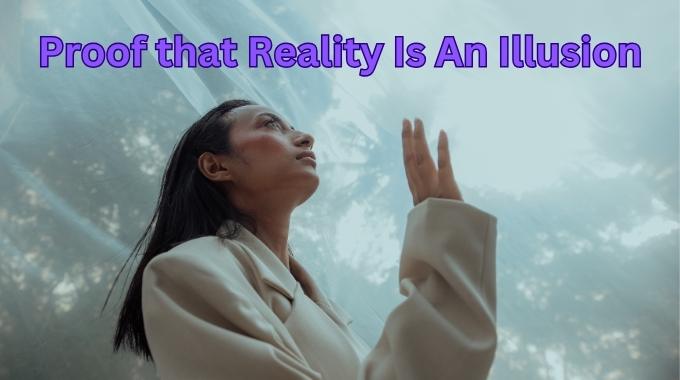
This article presents all the proof you ever need to believe, without a shadow of a doubt, that the world we live in is NOT real. The experiences you have are real, but reality is an illusion (Maya).
(Note: In this article, I don’t delve into the simulation hypothesis proposed by Nick Bostrom in 2003, which is yet another way of postulating that reality is an illusion, because I do NOT believe that our world is a computer simulation.)
The mountain of evidence presented herein about the illusionary nature of reality can be challenging to believe, but it can also be liberating. If you accept that reality is an illusion, then you can know that you are not limited by the world of appearances. By recognizing that your true power comes from within and that external reality is a reflection of your inner state, you can choose to experience the world in a way that is fulfilling and meaningful to you. In addition, many mystical traditions argue that recognizing the illusory nature of existence is a crucial step toward liberation and enlightenment
On the other hand, individuals who do not realize the illusory nature of the self and the world are at a distinct disadvantage. They mistakenly think their lives are solely shaped by external events, underestimating the power they possess in shaping their reality. They overly invest in their societal roles and become ensnared in unnecessary distress. Constantly burdened by worries, fears, or avoidance, they don't see that they hold the reins to their destiny, rather than being controlled by outside forces.
IMPORTANT: This perspective doesn't mean we should disregard the world as meaningless, but rather that we should approach it with a sense of playfulness, flexibility, and deep interconnectedness.
This article presents perspectives regarding the illusionary nature of reality from scientific, philosophical, religious, mystical, and spiritual paradigms of thought. Here’s how the article is organized:
- Scientific proof that reality is an illusion
- An excerpt from “Autobiography of a Yogi” by Paramahansa Yogananda in which he talks about Maya (illusion) and the reason for suffering
- Beliefs from many different cultures throughout history regarding the illusionary nature of reality
- Quotes from numerous world-renowned individuals who said that our world is an illusion or a dream, created by consciousness.
- Highly influential channeled materials regarding the illusionary nature of reality
- The Mandela Effect
Scientific Proof that Reality is an Illusion
Quantum Entanglement
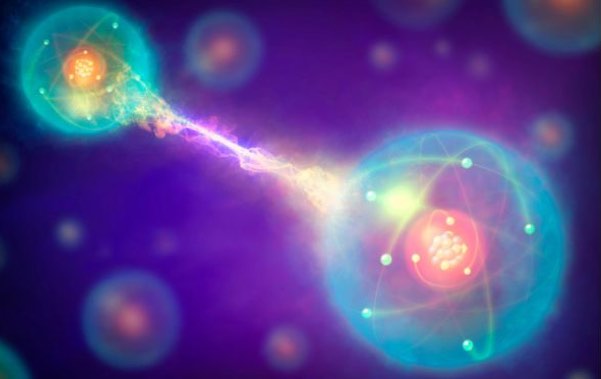
Quantum entanglement is one of the most mysterious and counterintuitive phenomena in quantum mechanics. When two quantum systems become entangled, measurements on one system seem to instantaneously affect the state of the other, regardless of the distance separating them. This “spooky action at a distance”, as Einstein famously called it, seemed to challenge the very foundations of physics.
Einstein, Podolsky, and Rosen (EPR) published a paper in 1935 suggesting that quantum mechanics is incomplete and that there might exist “hidden variables” that determine the outcomes of quantum measurements, but we just didn't know about them. According to this view, if we could account for these hidden variables, then the strange behavior of entangled particles would have a more intuitive explanation.
To clarify the debate between the “hidden variables” interpretation and the standard quantum mechanics interpretation, physicist John Bell formulated a set of inequalities in 1964, now known as Bell's inequalities.
Bell's Inequality in Simple Terms:
Bell proposed a thought experiment involving two entangled particles sent in opposite directions to two different observers, often referred to as Alice and Bob. They measure the particles' properties (like spin) along different orientations.
According to quantum mechanics, the results of these measurements will be correlated in a specific way because of the entanglement between the particles.
If local hidden variables were responsible for the outcomes of these measurements, then the results would have certain statistical properties (based on the idea that the outcomes are predetermined and not influenced by the measurement settings). Bell was able to derive an inequality — Bell's inequality — that must be satisfied if local hidden variables are the correct description of reality.
Nobel Prize Winning Tests Results:
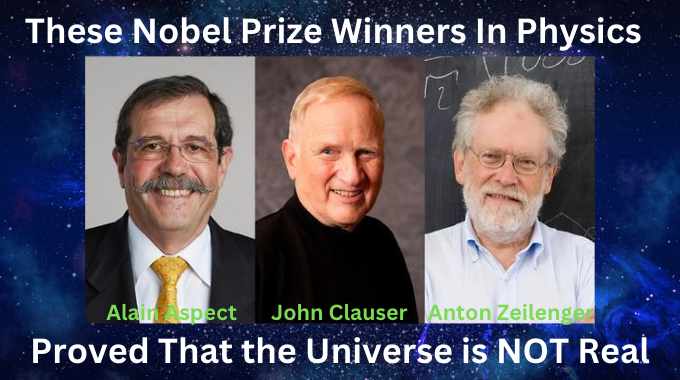
A series of experiments, starting with those conducted by Alain Aspect, John Clauser, and Anton Zeilinger tested Bell's inequalities – for which each was awarded the 2022 Nobel Prize in Physics. They did this by measuring entangled particles, like photons, under various conditions.
The results of these experiments have consistently violated Bell's inequalities, supporting the predictions of quantum mechanics and suggesting that local hidden variables cannot explain the behavior of entangled particles.
The data gathered by Aspect, Clauser, and Zeilinger demonstrated that the universe is “non-local”, meaning that entangled particles can affect each other instantaneously regardless of distance – effectively proving quantum physics' claim and contradicting Einstein's theory. As such, these experiments demonstrated that since particles (the building blocks of the universe) aren't real in the traditional sense, the universe itself isn't real.
IMPORTANT: Be sure to watch this awesome video by Archana Raghuram for much more about the experiments that proved reality is an illusion, PLUS a discussion on the convergence of quantum physics and Vedanta, and how the philosophical framework of Vedanta reconciles the paradox of quantum physics by highlighting the non-dual nature of reality and the inseparability of the observer and the observed:
The Double Slit Experiment
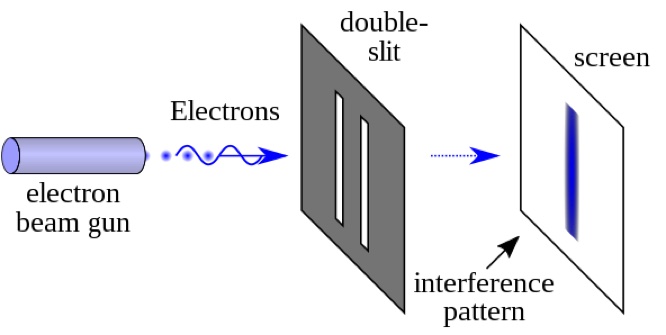
The Double Slit experiment is one of the most famous experiments in quantum mechanics, showcasing the wave-particle duality of particles and the surprising role of observation in determining their behavior.
The Basic Experiment:
- Setup: Imagine a barrier with two parallel slits. Behind this barrier is a detection screen. If we shoot particles (like electrons) at the barrier, some will pass through the slits and hit the detection screen.
- Wave-like behavior (Interference pattern): When both slits are open, and we are not observing which slit the particle goes through, an interference pattern emerges on the detection screen. This pattern is akin to what one would expect if waves were going through both slits, interfering constructively in some places (leading to bright bands) and destructively in others (leading to dark bands). This suggests that particles, in the absence of measurement, behave like waves.
- Measurement (Observer) Introduced: When a detector is placed at the slits to determine which slit the particle goes through, the interference pattern vanishes, and two bands appear on the screen. This implies the act of observing or measuring which slit the particle goes through collapses its wave-like nature to behave like a particle.
The double slit experiment has been interpreted by many physicists as evidence that reality is an illusion. This is because the way we experience the world depends on how we observe it. Watch this absolutely brilliant explanation of the double slit experiment by Professor Jim Al-Khalili (and be sure to watch the mind-blowing ending):
For much more on this topic, watch this fascinating video in which Archana Raghuram delves into the question of what exactly an observer is and how the behavior of particles is connected to the action of an ‘observer.’ She brilliantly explains it with a simple and relatable, everyday analogy:
Through the Quantum Looking Glass: How Consciousness Creates Our Reality
Here are some additional findings of quantum mechanics that have been interpreted as evidence of the illusionary nature of reality:
- The uncertainty principle: The uncertainty principle states that it is impossible to know both the position and momentum of a particle with perfect accuracy. This suggests that the world is not made up of point particles, but rather of waves of probability.
- The Many Worlds Interpretation: The Many Worlds Interpretation is a proposed interpretation of quantum mechanics that states that every possible outcome of a quantum event occurs in a separate universe. This suggests that there is no single, objective reality, but rather a multiverse of possible realities.
These are just a few of the findings of quantum physics that have been interpreted as evidence of the illusionary nature of reality. These findings have forced us to rethink our understanding of the nature of reality.
Excerpt from the “Autobiography of a Yogi” about Maya and the Reason for Suffering
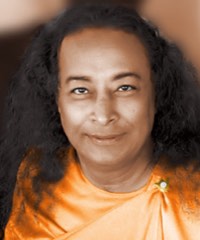 Paramahansa Yogananda, the author of “Autobiography of a Yogi,” was a Hindu monk and guru who believed that reality is an illusion. He wrote about this in his book, saying that the world of appearances is not real, but is instead a projection of our own minds.
Paramahansa Yogananda, the author of “Autobiography of a Yogi,” was a Hindu monk and guru who believed that reality is an illusion. He wrote about this in his book, saying that the world of appearances is not real, but is instead a projection of our own minds.
Yogananda's views on the nature of reality are based on the Hindu concept of Maya, a Sanskrit word that means “illusion” or “unreality.” In Hindu philosophy, Maya is the power of God to create the world of appearances. The world of appearances is not real in itself but is a projection of Brahman, the ultimate reality.
Below is an excerpt about Yogananda's personal experience with Maya and what he found out about the reason for suffering from Chapter 30 of the “Autobiography of a Yogi”:
Ch. 30: The Law of Miracles
The ancient Vedic scriptures declare that the physical world operates under one fundamental law of Maya, the principle of relativity and duality. God, the Sole Life, is an Absolute Unity; He cannot appear as the separate and diverse manifestations of a creation except under a false or unreal veil. That cosmic illusion is Maya. Every great scientific discovery of modern times has served as a confirmation of this simple pronouncement of the rishis…
Just as the motion-picture images appear to be real, but are only combinations of light and shade, so is the universal variety a delusive seeming. The planetary spheres, with their countless forms of life, are naught but figures in a cosmic motion picture, temporarily true to five sense perceptions as the scenes are cast on the screen of man’s consciousness by the infinite creative beam.
A cinema audience can look up and see that all screen images are appearing through the instrumentality of one imageless beam of light. The colorful universal drama is similarly issuing from the single white light of a Cosmic Source. With inconceivable ingenuity God is staging entertainment for His human children, making them actors as well as audiences in His planetary theater.
One day I entered a motion picture house to view a newsreel of the European battlefields. World War I was still being waged in the West; the newsreel recorded the carnage with such realism that I left the theater with a troubled heart.
“Lord,” I prayed, “why dost Thou permit such suffering?”
To my intense surprise, an instant answer came in the form of a vision of the actual European battlefields. The horror of the struggle, filled with the dead and dying, far surpassed in ferocity any representation of the newsreel.
“Look intently!” A gentle voice spoke to my inner consciousness. “You will see that these scenes now being enacted in France are nothing but a play of chiaroscuro [light and dark]. They are the cosmic motion picture, as real and as unreal as the theater newsreel you have just seen—a play within a play.”
My heart was still not comforted. The divine voice went on: “Creation is light and shadow both, else no picture is possible. The good and evil of Maya must ever alternate in supremacy. If joy were ceaseless here in this world, would man ever seek another? Without suffering he scarcely cares to recall that he has forsaken his eternal home. Pain is a prod to remembrance. The way of escape is through wisdom! The tragedy of death is unreal; those who shudder at it are like an ignorant actor who dies of fright on the stage when nothing more is fired at him than a blank cartridge. My sons are the children of light; they will not sleep forever in delusion.”
Although I had read scriptural accounts of Maya, they had not given me the deep insight that came with the personal visions and their accompanying words of consolation. One’s values are profoundly changed when he is finally convinced that creation is only a vast motion picture, and that not in it, but beyond it, lies his own reality.
Cultural Beliefs About the Illusionary Nature of Reality
The beliefs listed below provide a glimpse into the different ways that the illusionary nature of reality has been understood and interpreted by different cultures and traditions throughout history.
The Kybalion in Western Esotericism:
The Kybalion is a book about the teachings of Hermes Trismegistus that was published in 1908 by the Yogi Publication Society in Chicago, Illinois. It teaches that the universe is governed by these seven Hermetic principles:
- The Principle of Mentalism
- The Principle of Correspondence
- The Principle of Vibration
- The Principle of Polarity
- The Principle of Rhythm
- The Principle of Cause and Effect
- The Principle of Gender
The Principle of Mentalism states: “The All is Mind; The Universe is Mental.” According to this principle, everything that exists, every phenomenon we experience, and every nuance of reality originates from a singular, universal mind – often referred to as “The All” in Hermetic teachings. If everything is a manifestation of this one Mind, then what we perceive as “reality” is just a mental construct or a thought within this universal consciousness.
To draw an analogy, think of a dream. When you're dreaming, the events, places, and people within the dream feel real. But upon waking, you recognize that the dream was an illusion, a creation of your mind. The Principle of Mentalism suggests something similar about our reality: it might feel and seem real to us but in the grand scheme of “The All,” it's a mental construct, making our perceived reality illusionary.
The Principle of Correspondence is encapsulated in the phrase: “As above, so below; as below, so above.” It speaks to the idea that there's a correspondence or similarity between the different planes of existence, whether they be physical, mental, or spiritual. This concept implies that patterns observed on one plane can be found reflected in others, indicating a deeper universal order or structure. This means that there is a correspondence between the microcosm (the individual) and the macrocosm (the universe).
If the events and circumstances on our physical plane (the “below”) are merely reflections or manifestations of patterns from higher planes (the “above”), then our reality is not the primary or originating reality. Instead, it's a derivative or secondary manifestation of those higher realities. The physical reality we observe could be seen as a shadow or reflection of more profound truths.
A useful analogy can be found in Plato's Allegory of the Cave. In it, prisoners chained in a cave see only the shadows cast on a wall by objects behind them. For the prisoners, those shadows are their reality. However, those shadows are mere reflections of the actual objects and, beyond the cave, the world outside. Similarly, the Principle of Correspondence suggests that our physical reality might just be a “shadow” or reflection of something deeper and more profound, making it potentially illusionary in comparison.
The Principle of Vibration states, “Nothing rests; everything moves; everything vibrates.” This principle posits that motion is a fundamental characteristic of everything in the universe, from the tiniest particles to the largest galaxies. Everything is in a state of constant vibration, albeit at different frequencies.
Our senses interpret different frequencies of vibrations as different phenomena. For example, our eyes interpret certain frequencies of electromagnetic vibrations as light and color, while our ears interpret vibrational frequencies in air as sound. This suggests that what we perceive is not the object or phenomenon itself but our interpretation of its vibrational frequency.
At an atomic and subatomic level, particles are in constant motion, vibrating at specific frequencies. What we perceive as solid objects are essentially spaces filled with rapidly moving particles. This means that the apparent solidity and stability of matter is an illusion created by our limited perceptual abilities.
In essence, the Principle of Vibration underscores the idea that the tangible and concrete reality we perceive is but a snapshot of various vibrational states. The true nature of reality is more fluid, dynamic, and interconnected than our limited senses might suggest, leading to the notion that our fixed perception of reality is illusionary.
Advaita Vedanta Tradition in Hindu Philosophy:
Advaita Vedanta is a non-dualistic school of Hindu philosophy that teaches us that the world of appearances is Maya, which means “illusion” or “unreality,” and that the external world is an extension of our own consciousness. In this view, our minds serve as both the artists and the canvas, painting the tapestry of existence. Below is a brief overview:
- Core Concept: “Advaita” means “not two” in Sanskrit. The fundamental premise of Advaita Vedanta is that there is only one ultimate reality, Brahman, and everything else (the world, individual souls) is an illusion. This perspective solves the paradox of quantum physics by suggesting that the observer's consciousness is not separate from the reality being observed.
- Brahman: The ultimate reality or universal spirit. Brahman is the eternal, unchanging, infinite, immanent, and transcendent reality that is the Divine Ground of all matter, energy, time, space, being, and everything beyond in this universe.
- Atman: Refers to the individual soul or self. Advaita posits that Atman is not separate from Brahman but is, in fact, the same as Brahman.
- Maya: The concept of Maya is central to the idea that reality is an illusion. Maya is often translated as “illusion”, but it can also mean “unreality” or “magic”. In Advaita Vedanta, the world we perceive through our senses is said to be Maya – an illusion – because it is transient and ever-changing, while Brahman is eternal and unchanging.
- Realization: The ultimate goal in Advaita Vedanta is self-realization or enlightenment, where one realizes the oneness of Atman and Brahman. This realization dispels the illusion created by Maya and one perceives the true nature of reality.
- Historical Perspective: Advaita Vedanta has ancient roots in the Upanishads, but its most famous proponent was Adi Shankaracharya (Adi Shankara) in the early 8th century CE. He traveled across India, engaging in philosophical debates, and established the non-dualistic interpretation of the scriptures.
The Sufi Tradition in Islam:
The Sufi tradition is a mystical tradition of Islam that teaches that the goal of life is to achieve fana, or annihilation of the ego, and baqa, or subsistence in God. The Sufi tradition teaches that the world of appearances is an illusion or a veil and that the only reality is God. Here's a brief overview:
- Core Concept: Sufism focuses on the inward search, emphasizing personal experience and direct knowledge of God (Allah) through love, purification of the soul, and deep introspection.
- Love and Devotion: Sufis are known for their intense love and devotion to God. This is often expressed through poetry, music, and dance, like the famous “whirling dervishes” of the Mevlevi order.
- The World as a Veil: In Sufi teachings, the material world is considered a veil that hides the ultimate reality of God. Sufism suggests that the material world is a temporary and lesser reality compared to the eternal truth of God.
- Concept of Unity: Sufism teaches the idea of “Tawhid” or the oneness of God. While this concept is fundamental to all of Islam, Sufis emphasize experiential and mystical understanding of this oneness, often described in terms of lover and Beloved, with the lover seeking union with the Divine.
- Path to God: The Sufi journey involves various stages (Maqamat) and states (Ahwal) that aspirants pass through in their quest for God. These involve rigorous spiritual exercises, meditations, and ethical practices.
- Historical Perspective: Sufism has been a significant part of Islamic tradition since its early days, with various Sufi orders and brotherhoods emerging over time. Notable Sufis like Rumi, Hafez, and Al-Ghazali have enriched Islamic thought with their writings and teachings.
Dzogchen School of Tibetan Buddhism:
Dzogchen, often translated as “Great Perfection,” is a school of Tibetan Buddhism that teaches that the ultimate nature of reality is rigpa, or pure awareness. Rigpa is said to be beyond all concepts and dualities, including the distinction between subject and object. Here's a brief overview:
- Core Concept: Dzogchen points to the natural, intrinsic state of all beings. This state is complete and perfect as it is, and Dzogchen teachings aim to directly introduce practitioners to this inherent nature.
- Nature of Mind: In Dzogchen, emphasis is placed on recognizing the “nature of mind” or “rigpa,” which is the pure, undeluded awareness that is ever-present but often obscured by dualistic thoughts and emotional turmoil.
- Dream-Like Reality: Dzogchen teachings often use the term “dream-like” or “illusion-like” to describe the nature of phenomena. While phenomena appear and can be experienced, they lack inherent, independent existence. In this way, they are like illusions or dreams: apparent but devoid of true, solid reality.
- Historical Perspective: The Dzogchen teachings are believed to originate from primordial Buddha Samantabhadra and have been transmitted through a lineage of realized masters. They are contained within tantras and texts which form the core of Dzogchen teachings.
The Kabbalah in Judaism:
The Kabbalah is a mystical tradition of Judaism that teaches that the world of appearances is a reflection of the divine. Here's a brief overview and its perspective on the nature of reality:
- Core Concept: Kabbalah delves into the deeper, esoteric aspects of the Torah (Jewish scriptures). It offers insights into the divine nature, the process of creation, and the purpose and role of human souls.
- The Sefirot: Central to Kabbalistic thought is the Tree of Life, a diagram composed of ten “Sefirot” (emanations or attributes) through which God interacts with the world. These Sefirot help bridge the infinite divine realm and our finite physical reality.
- Reality and Illusion: Kabbalah teaches that the physical world we perceive is just a tiny fraction of the broader, spiritual reality. Everything in our physical reality has a spiritual root. The material world is a reflection or projection of these higher spiritual truths, and as such, it is not the ultimate reality. While not necessarily “illusion” in the deceptive sense, the material world is seen as a veiled or condensed version of the spiritual realm.
- Tikkun Olam: A significant concept in Kabbalah is “Tikkun Olam,” often translated as “repairing the world.” Humanity's purpose, in this view, is to elevate the sparks of divine light scattered throughout the physical world, rectifying imbalances and drawing the world closer to its spiritual source.
- Historical Perspective: While Kabbalistic thought can be traced back to early Jewish mystic traditions, its primary text, the Zohar, was written in the 13th century. Over time, Kabbalah has influenced various Jewish movements and has been adopted or adapted by some non-Jewish groups as well.
The Bhagavad Gita in Hinduism:
The “Bhagavad Gita” is a 700-verse Hindu scripture that is part of the Indian epic Mahabharata. It's a dialogue between the prince Arjuna and the god Krishna, who serves as his charioteer. Here's a brief overview and its perspective on reality:
- Core Concept: The “Gita” addresses the moral and philosophical dilemmas faced by Arjuna on the battlefield of Kurukshetra. Krishna provides guidance on duty (dharma), righteousness, and the paths to spiritual realization.
- Maya (Illusion): In the “Gita,” the material world is often described as being under the influence of “maya,” which can be understood as illusion or ignorance. Maya causes souls to become entangled in the cycle of birth, death, and rebirth, making them forget their true, divine nature.
- Reality and Illusion: While the physical world is real in one sense, it's also transient and ever-changing, which contrasts with the eternal and unchanging nature of the soul (Atman) and the Ultimate Reality (Brahman).
- Paths to Realization: The “Gita” outlines various paths (yogas) like Bhakti (devotion), Jnana (knowledge), and Karma (selfless action) to transcend the influence of Maya and realize one's true self and relationship with the divine.
The Native American concept of the dream world:
The understanding of dreams and the dream world varies across Native American tribes, as there are hundreds of distinct tribes with their own beliefs and traditions. However, there are some shared or common ideas among many tribes:
- Dream World's Significance: For many Native American cultures, dreams are not just random occurrences during sleep but are deeply meaningful. They can offer guidance, foretell events, or serve as encounters with spirits or ancestors.
- Reality and Illusion: Many tribes hold that the dream world and the waking world are interconnected realms of experience, neither being more “real” or “illusory” than the other. In this worldview, dreams can be as consequential as waking experiences and are sometimes seen as being more real than the world of waking reality. Some tribes see dreams as an opportunity to travel to other realms, interact with spirits, or receive messages from the Creator or ancestors.
- Dream Catchers: One well-known symbol associated with dreams in Native American culture is the dream catcher, originally from the Ojibwa (Chippewa) tribe. Hung above the bed, it's believed to filter dreams, allowing only good dreams to pass through, while trapping negative dreams or energies.
- Guidance and Healing: Dreams can be a source of guidance. Tribal shamans or medicine people might interpret dreams to diagnose illnesses, find lost objects, or predict events. Some tribes believe dreams offer insights into one's path in life or lessons to be learned.
Solipsism:
Solipsism is an ancient philosophical concept that only the self exists. Solipsists believe that the world and other people are simply a creation of the mind. Solipsism doesn't have a single originator or a specific date of origin. Instead, its roots can be found in various philosophical traditions and discussions about the nature of knowledge, reality, and the self. Here are some key points regarding its development:
- Ancient Philosophy: While the term “solipsism” itself wasn't used in ancient times, certain aspects of solipsism can be traced back to ancient philosophical discussions. For instance, some interpretations of certain Pre-Socratic philosophers.
- Modern Development: The explicit formulation of solipsism is more of a modern philosophical development. It often emerges in discussions about epistemology (the study of knowledge) in response to challenges of establishing certain knowledge of the external world. René Descartes, with his method of radical doubt, comes close by emphasizing the certainty of the thinking self (“Cogito, ergo sum” – “I think, therefore I am”).
The Mahayana Sutras in Buddhism:
The Mahayana Sutras are a collection of Buddhist texts that teach the Mahayana path to enlightenment. The Mahayana Sutras teach that the world of appearances is like a dream or illusion, introduce the concept of emptiness, and often describe reality as being like a dream or illusion, aiming to help practitioners see beyond superficial perceptions and cultivate a deeper understanding of the nature of existence. It's generally accepted that most of the Mahayana Sutras were composed between the 1st century BCE and the 5th century CE. Here's a brief overview:
- Core Concept: The Mahayana Sutras emphasize the Bodhisattva ideal, which promotes the path of compassion and the aspiration to achieve enlightenment for the benefit of all sentient beings.
- Emptiness (Śūnyatā): Many Mahayana Sutras introduce the concept of “emptiness” (śūnyatā). This doesn't mean “nothingness,” but rather that all phenomena are devoid of inherent existence or an unchanging essence. Everything is interdependent and arises due to causes and conditions.
- Reality and Illusion: In line with the teaching of emptiness, Mahayana texts often use metaphors like dreams, illusions, or mirages to describe the nature of reality. While phenomena appear to exist in certain ways, they are empty of inherent nature. By understanding reality as akin to an illusion, practitioners can loosen attachment and cultivate wisdom.
The Tao Te Ching in Taoism:
The “Tao Te Ching” is an ancient Chinese text attributed to the sage Laozi and is foundational to Taoism. It teaches that the world of appearances is a manifestation of the Tao or the Way, which is the underlying reality of the universe. Here's a brief overview:
- Core Concept: The “Tao Te Ching” is a guide to the philosophy and practice of Taoism, emphasizing living in harmony with the “Tao” (often translated as “the Way”), an underlying principle that is the source of all existence.
- Reality and Illusion: The “Tao Te Ching” suggests that the names and distinctions we create are not the eternal reality. The true Tao is beyond names and descriptions. Our human perspectives, with their dualities (e.g., right/wrong, beautiful/ugly), are limited and don't capture the full essence of the Tao. Such distinctions can be seen as a form of illusion because they don't reflect the undivided whole of the Tao.
- Mystical Nature: Many verses in the “Tao Te Ching” are paradoxical and encourage readers to look beyond superficial understandings of reality. By emphasizing simplicity, humility, and spontaneity, one can align with the Tao and see beyond the illusions created by human constructs.
Quotes About the Illusionary Nature of Reality
“As a man who has devoted his whole life to the most clear-headed science, to the study of matter, I can tell you as a result of my research about atoms this much: There is no matter as such. All matter originates and exists only by virtue of a force that brings the particle of an atom to vibration and holds this most minute solar system of the atom together. We must assume behind this force the existence of a conscious and intelligent mind. This mind is the matrix of all matter.” ~ Max Planck, winner of the Nobel Prize in Physics in 1918
“I regard consciousness as fundamental. I regard matter as derivative from consciousness… Everything that we talk about, everything that we regard as existing, postulates consciousness.” ~ Max Planck, winner of the Nobel Prize in Physics in 1918
“There is no place in this new kind of physics for the field and matter, for the field is the only reality.” ~ Albert Einstein, winner of the Nobel Prize in Physics in 1921
“Everything that we call real is made up of things that cannot be regarded as real.” ~ Niels Bohr, winner of the Nobel Prize in Physics in 1922.
“Not only is the Universe stranger than we think, it is stranger than we can think.” ~ Werner Heisenberg, winner of the Nobel Prize in Physics in 1932.
“It was not possible to formulate the laws of quantum mechanics in a fully consistent way without reference to the consciousness of the observer. The very study of the external world led to the conclusion that the content of consciousness is the ultimate reality.” – Eugene Wigner, winner of the Nobel Prize in Physics in 1963.
“If I say that electrons behave like particles I give the wrong impression; also if I say they behave like waves. They behave in their own inimitable way, which technically could be called a quantum mechanical way. They behave in a way that is like nothing that you have seen before.” ~ Richard Feynman, winner of the Nobel Prize in Physics in 1965.
“The universe is a hologram.” ~ David Bohm (a prominent theoretical physicist known for his contributions to the fields of quantum mechanics, philosophy, and the nature of consciousness), Wholeness and the Implicate Order, 1980
“Reality is merely an illusion, albeit a very persistent one.” ~ Unknown (Note: this quote is often attributed to Einstein, but there is no evidence that he ever said or wrote this.)
“Consciousness is not a spectator of the quantum world, but a participant in bringing it into being.” ~ John Archibald Wheeler, theoretical physicist who made significant contributions to the fields of quantum mechanics, general relativity, and nuclear physics.
“There is no out there, out there.” ~ John Archibald Wheeler
“There’s a billion to one chance we’re living in base reality.” ~ Elon Musk
“The world is a dream, and we are the dreamers.” – Carl Jung
“All that we see or seem is but a dream within a dream.” ~ Edgar Allan Poe, A Dream Within a Dream
“The world is but a shadow, and the life of a man but a dream.” – Hindu scripture, The Upanishads
“The world is an illusion, and we are the creators of that illusion.” – Buddha
“The world is Maya, an illusion. It is not real.” – Hindu scripture, The Bhagavad Gita
“The world is an illusion, but it is an illusion that we must take seriously.” – Aldous Huxley, The Doors of Perception
“All the world's a stage, and all the men and women merely players.” – William Shakespeare, As You Like It
“The world is a mirror, and we see in it what we are.” – Rumi, The Essential Rumi
“The world is a looking glass, and gives back to every man the reflection of his own face.” – William Shakespeare, Hamlet
“You have this strange feeling of being a puppet, of having your strings pulled by environment, social pressures, etc., or of being driven along a course which is called ‘the causality of nature' according to laws which human beings can't resist. And that, too, is Maya.” ~ Alan Watts
“There are vibrations of many different universes right here, right now. We’re just not in tune with them. There are probably other parallel universes in our living room–this is modern physics. This is the modern interpretation of quantum theory, that many worlds represent reality.” ~ Dr. Michio Kaku, Theoretical Physicist, Professor and Best-selling Author
Quotes by Sri Ramana Maharshi
Sri Ramana Maharshi was a Hindu sage who lived in India from 1879 to 1950. He is considered one of the most important figures in modern Hinduism. Maharshi taught that the world of appearances is an illusion and that the only reality is the Self. Here are some quotes from Maharshi indicating that reality is an illusion:
- “The world is like a dream. It is not real.“
- “Q. Is there no difference between waking and a dream? A. Waking is long and dream is short; other than that there is no difference.” (from the book “Who Am I”)
- “The world is a projection of the mind. It is not outside of you.“
- “When you see the Self, you see that the world is an illusion.”
- “The Self is the only reality. Everything else is an illusion.
- “The world is not what it seems. It is a play of maya.”
The concept of Maya is central to Maharshi's teachings. Maya is a Sanskrit word that means “illusion” or “unreality.” In Hindu philosophy, Maya is the power of God to create the world of appearances. The world of appearances is not real in itself but is a projection of Brahman, the ultimate reality.
Channeled Materials
The Seth Material by Jane Roberts
The Seth Material is a collection of books and audio recordings that were channeled by Jane Roberts from a non-physical entity named Seth. Seth presented a variety of ideas about the nature of reality, including the idea that reality is an illusion.
One of the ways that Seth put forth the idea of reality as an illusion was by comparing the world of appearances to a hologram. A hologram is a three-dimensional image that is created by shining a laser through a photographic plate. The image appears to be solid and real, but it is actually just a projection of light. Seth suggested that the world of appearances is like a hologram, in that it is a projection of our own consciousness.
Here are some specific quotes from the Seth Material that put forth the idea of reality as an illusion:
- “The world is a hologram, a projection of your own consciousness.”
- “There is no such thing as time or space. They are illusions.”
- “You are all one, and the world is an illusion of separation.”
- “You are not limited by the world of appearances. You can create your own reality.
- “The world of appearances is a projection of your own consciousness.”
- “You create your own reality through your thoughts and beliefs.”
- “You create your reality. There is no other rule.”
The “Law of One”
The “Law of One,” also known as the “Ra Material,” is a series of channeled texts that are attributed to an entity called “Ra.” According to the materials, Ra is a collective consciousness or group of beings from a higher density or dimension who communicated through a process of channeling with a woman named Carla Rueckert in the 1980s.
The Law of One indicates that reality is an illusion in a number of ways. Here are some specific quotes from the Law of One material about the illusionary nature of reality:
- “Reality is created by thought. What you think, you become.“
- “The world of appearances is a projection of the One. It is not ultimately real.”
- “We are all creators. We can choose to create a reality that is loving, peaceful, and harmonious.”
- “The illusion of separation is the root of all pain and suffering.”
The Law of One materials are a complex and challenging work, but they can be a valuable source of insights into the nature of reality.
A Course in Miracles
A Course in Miracles (ACIM) is a spiritual text that teaches that the world of appearances is an illusion. The Course states that the only reality is God, and that the world of appearances is a projection of our own minds.
The Course uses a number of different metaphors to describe the world of appearances as an illusion. One metaphor is that the world of appearances is like a dream. When we dream, we experience things that are not real, but they seem real to us while we are dreaming. The Course says that the world of appearances is like a dream, in that it is not real, but it seems real to us because of our beliefs.
Another metaphor that the Course uses is that the world of appearances is like a hologram. A hologram is a three-dimensional image that is created by shining a laser through a photographic plate. The image appears to be solid and real, but it is actually just a projection of light. The Course says that the world of appearances is like a hologram, in that it is a projection of our own minds.
Here are some specific quotes from the Course in Miracles that put forth the idea of reality as an illusion:
- “The world you see is not the world that is.”
- “The world of appearances is a projection of your own mind.”
- “You create your own reality through your thoughts and beliefs.”
- “You are not limited by the world of appearances. You can create your own reality.”
Bashar – Channeled by Darryl Anka
Bashar is a popular channeled entity, channeled by Darryl Anka. Here are a few quotes about the illusionary nature of reality attributed to Bashar:
- “Always remember, there is no ‘out there.' There is only you. Physical reality is an illusion, a mirror, a reflection. You can use it as a tool, in some senses, to reflect what is going on within you: what your beliefs are, what your thoughts are, what your emotions are, what your attitudes are, and what your definitions are.”
- “The universe is a mirror that reflects back to you the energy you project.”
- “You are a multidimensional being experiencing a limited physical reality for expansion and growth.“
- “Your personality is really nothing more than a window or a prism through which your consciousness creates the experience called physical reality.”
Now, that experience is, of course, actually only taking place within you. - “Everyone you experience in your reality was created by you to interact with as a reflection of you. So they exist in their own right, but the only ones you actually interact with in physical reality are the reflections you've created to experience in your reality.“
- “You exist in a holographic universe, where each part contains the whole within it.”
- “Even though you may think, as we have said, that you are ALL sharing one particular reality, you are not. You are creating your own version, your own simulation through agreements, telepathically connected agreements with each other, to create what appears to be the same reality. But each of you is creating your own. And many of you now are beginning to realize, as your society continues forward, that there are many individuals who are choosing different expressions of reality that are not necessarily in alignment with the kind of experience that you prefer to have on your planet. Or again, more precisely, on your planets, because there are multiple versions of the Earth simultaneously coexisting here. And the idea is that now the splitting prism has moved forward enough that there is starting to be in between all of these different parallel realities, a kind of borderline, a kind of barrier. You can liken it to the idea, as we have said, of a glass wall. You can see through it to the other realities, to the people that are not necessarily choosing things that are vibrationally compatible with the kind of reality experience you prefer. But that doesn't mean that they can affect you because they can no longer really reach you with their vibration – except by your choice to mirror or mimic what you're seeing on the other side of the glass. But there is no other effect than that. Your choice to believe that you must be affected by them is you creating that effect in your reality, your discrete parallel reality. So as you move forward, recognizing that each of you is in your own reality, literally, and that you can make more and more agreements with those who are more vibrationally compatible with what you prefer – to (again) continue to generate simulations of these realities for yourselves that do harmonize with those that are vibrationally compatible with you, and dis-harmonize or become more discoherent with those that are not vibrationally compatible with what you prefer – the split becomes wider and wider. The walls of glass become, in essence, thicker and thicker and thicker.” ~ from Navigating the Splitting Prism of Parallel Realities
The Mandela Effect
The Mandela Effect is a phenomenon where a large number of people remember something in a way that contradicts the current reality. The term was coined by Fiona Broome after she discovered that she, along with many other people, remembered Nelson Mandela dying in prison in the 1980s. However, Nelson Mandela was actually released from prison in 1990 and passed away in 2013.
Some of the most popular examples include:
- Berenstain Bears vs. Berenstein Bears: Many people remember the popular children's book series as being spelled “Berenstein Bears” with an “e”, but it's now spelled “Berenstain Bears” with an “a”.
- “Luke, I am your father”: This famous line from Star Wars is often quoted this way, but the line now is “No, I am your father.”
- Location of New Zealand: Some people remember New Zealand as being located to the northeast of Australia, rather than to the southeast.
- “Febreze” vs. “Febreeze”: The popular air freshener is actually spelled “Febreze” with one “e”, but many people recall it as “Febreeze” with two “e”s.
- The Monopoly Man: Many remember the Monopoly game's mascot, Rich Uncle Pennybags, wearing a monocle, but now he doesn’t.
- “Mirror, mirror on the wall.” Many people remember the line from Disney's 1937 animated film “Snow White and the Seven Dwarfs” as “Mirror, mirror on the wall, who's the fairest of them all?” However, the line in the movie is now “Magic mirror on the wall, who's the fairest one of all?”
For much more about the Mandela Effect, see:
What’s the Meaning of the Mandela Effect?
Mandela Effect, Afterlife, Timelines and the Simulation
How to Interpret Mandela Effects





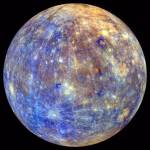


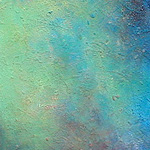








Great, in-depth, thought-provoking article, Ross. You have covered all the fundamental bases, both scientifically and spiritually. It seems like all religions and mystics speak the same language as do the greatest scientific and philosophical minds of our time. I particularly love the quote by Max Planck, “This mind is the matrix of all matter.”